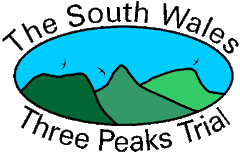So for the Abergavenny area, when using your compass to help remember whether to add or subtract 1 deg 17 min the current mnemonic still applies: that is to correct between magnetic bearings and grid bearings , “grid to mag, add – mag to grid, get rid”.
There are of course other ways of finding north. In the January 2010 edition of 'Trail' magazine they had the query "Your GPS has run out of juice, your compass is lost and its dark. How can you identify north?" The Three Peaks Trial takes place in daylight hours but should you ever be in the questioner's position Trail advised:
"Stellar navigation (using the stars) is the original complete direction-finding system used by the Phoenicians in 1200BC, and is still employed as a navigational practice by Special Forces today”, says navigation expert Lyle Brotherton. “Finding north/south using the stars is an invaluable navigational tool. But don’t think this is only something you need to do if you lose your compass (you should be carrying a spare one anyway!); it isn’t. Being able to make reference to north without continually referring to your compass makes you a more proficient, competent and a safer navigator.
“At night the North Star (Polaris) sits almost exactly at the North Pole – true north. Unlike the sun and the moon, and all the other stars, it is always in the same position in the night sky and is therefore a great way of determining the cardinals of the compass. It is not very bright so we use the well-known Plough Constellation nearby as a signpost to point towards it. Drawing an imaginary line from the so-called ‘pointer stars’ in the Plough, continue in a straight line until you get to the next bright star and you have found the North Star. Now you can simply determine eeast, south and west and use this as you compass.
During the day you can use your watch to find south in the northern hemisphere.
1. Point the hour hand directly at the sun.
2. Bisect the angle between it andthe 12 o’clock mark.
3. This direction is approximately south.
“Again you can now determine north, east and west. Hint: if you have a digital watch, draw an analogue watch on a piece of paper, with a stone on the ground or in the sand, set to the correct time.”
There's also some useful information on stellar navigation on the Ordnance Survey website Click Here
There's also some useful information on stellar navigation on the Ordnance Survey website Click Here


